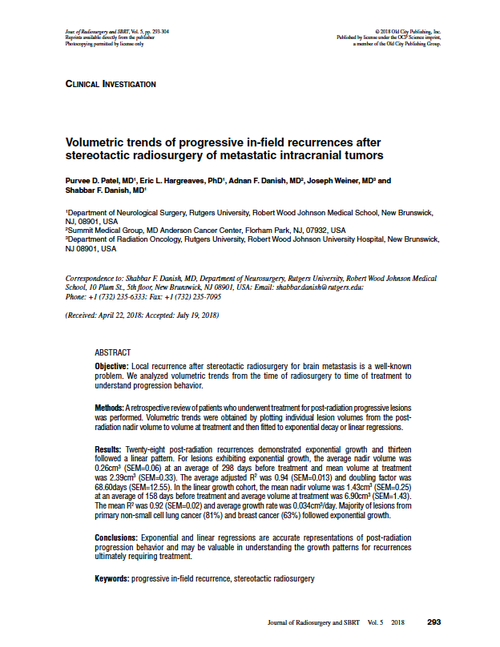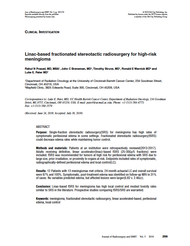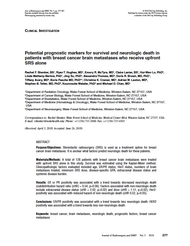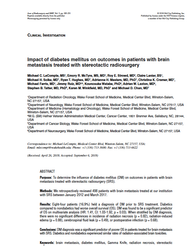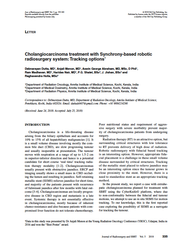- Home
- Journal Contents Downloads
- JRSBRT Downloads
- JRSBRT 5.4, p. 293-304
Product Description
Volumetric trends of progressive in-field recurrences after stereotactic radiosurgery of metastatic intracranial tumors
Purvee D. Patel, Eric L. Hargreaves, Adnan F. Danish, Joseph Weiner and Shabbar F. Danish
Objective: Local recurrence after stereotactic radiosurgery for brain metastasis is a well-known problem. We analyzed volumetric trends from the time of radiosurgery to time of treatment to understand progression behavior.
Methods: A retrospective review of patients who underwent treatment for post-radiation progressive lesions was performed. Volumetric trends were obtained by plotting individual lesion volumes from the postradiation nadir volume to volume at treatment and then fitted to exponential decay or linear regressions.
Results: Twenty-eight post-radiation recurrences demonstrated exponential growth and thirteen followed a linear pattern. For lesions exhibiting exponential growth, the average nadir volume was 0.26cm3 (SEM=0.06) at an average of 298 days before treatment and mean volume at treatment was 2.39cm3 (SEM=0.33). The average adjusted R2 was 0.94 (SEM=0.013) and doubling factor was 68.60days (SEM=12.55). In the linear growth cohort, the mean nadir volume was 1.43cm3 (SEM=0.25) at an average of 158 days before treatment and average volume at treatment was 6.90cm3 (SEM=1.43). The mean R2 was 0.92 (SEM=0.02) and average growth rate was 0.034cm3/day. Majority of lesions from primary non-small cell lung cancer (81%) and breast cancer (63%) followed exponential growth.
Conclusions: Exponential and linear regressions are accurate representations of post-radiation progression behavior and may be valuable in understanding the growth patterns for recurrences ultimately requiring treatment.
Keywords: progressive in-field recurrence, stereotactic radiosurgery
After payment has been processed for your order of a digital copy (PDF) of this article, you will see a download link on your completed order page and also receive an email containing a download link. The links, which will enable you to download one copy of the article, will expire after 24 hours.
 Loading... Please wait...
Loading... Please wait...

